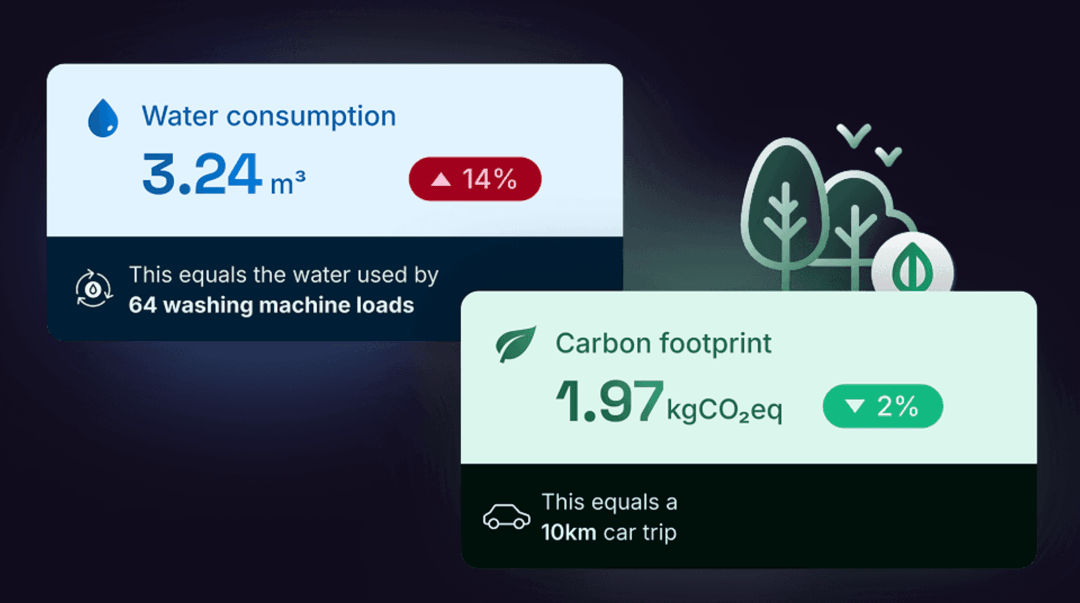
Overcoming the challenges of Cloud environmental impact measurement
Scaleway's Environmental Footprint Calculator measures carbon emissions and water usage, empowering users to optimize infrastructures and embrace responsible digital practices.

2024 marked a major turning point in the European regulatory landscape with the implementation of the Corporate Sustainability Reporting Directive (CSRD). Far more than just an update, this directive imposes an unprecedented level of transparency on thousands of companies regarding their environmental, social, and governance (ESG) impacts.
For the tech sector — and especially for businesses that rely on cloud services — this represents a significant challenge: how can they reliably and accurately measure the footprint of their digital infrastructure?
At Scaleway, we believe that a high-performing cloud is, above all, a transparent and sustainable one. With this vision in mind, we developed our environmental impact calculator, a strategic tool designed to turn a complex compliance exercise into a real opportunity for action. More than just a feature, it's a true partner for companies aiming to meet CSRD requirements.
This article will show you how our calculator integrates directly into your sustainability report and helps you document several key sections of the European standards.
The CSRD is built on a fundamental concept: double materiality, which distinguishes between:
Both dimensions must now be detailed according to a standardized set of European norms, the European Sustainability Reporting Standards (ESRS). These cover topics ranging from climate change (ESRS E1) to water resources (ESRS E3) and the circular economy (ESRS E5).
For businesses, cloud infrastructure is no longer an exception. Virtual servers, storage, and data transfer all contribute to the energy and water consumption of data centers. Until now, this impact was often estimated indirectly and unreliably, making CSRD reporting particularly difficult.
That’s where Scaleway’s calculator makes a real difference. It’s designed to deliver precise, traceable data aligned with the standards, enabling you to shift from estimates to verifiable facts for your reports.
Our calculator is far more than a simple interface. It is the result of a rigorous methodology, based on a life cycle assessment (LCA) approach that breaks down impact into three detailed components:
This comprehensive approach, aligned with recognized standards like the ADEME’s Product Category Rules (PCR), allows us to provide accurate data on the two most requested indicators: CO₂e emissions (in kgCO₂e) and water consumption (in m³).
To support your integration of this data, our calculator includes several key features:
In practice, how does the data generated by our calculator translate directly into your CSRD report? Let’s examine how they map to key environmental ESRS standards.
This is arguably the most critical ESG reporting standard, requiring detailed information about greenhouse gas (GHG) emissions.
Often overlooked, water consumption in datacenters is a growing sustainability concern — especially in water-stressed regions. The CSRD requires companies to disclose their impact on water resources.
Our calculator provides your cloud-related water consumption in liters.
This data is sourced from our efficient datacenters, which use advanced cooling systems. We also share their Water Usage Effectiveness (WUE), which is significantly lower than industry averages. This information supports your compliance with ESRS E3.
This standard evaluates how companies manage resources and transition toward a more circular economy.
Data related to the impact of hardware manufacturing offers valuable insight into the use of raw materials.
Our circular economy programs, such as Transformers (server refurbishment) and Nursery (hard drive refurbishment), enable you to demonstrate concrete actions Scaleway is taking to extend equipment lifespans and reduce electronic waste. Your use of these services contributes to this sustainable value chain and can be documented in your report. (More information available in our Impact Report.)
The CSRD is a powerful catalyst for responsible digital transformation. It pushes both providers and users to reconsider their technology choices through the lens of sustainability.
At Scaleway, our environmental footprint calculator is our response to this challenge. It acts as a bridge between technological infrastructure and regulatory reporting obligations, providing you with the exact data you need for your sustainability reports.
It empowers you to make better-informed decisions, optimize your cloud architectures — by choosing the most sustainable availability zone, for example —, and make Green IT a measurable reality rather than just an aspirational goal.
Learn more about what the Environmental Footprint Calculator can do for you.

Scaleway's Environmental Footprint Calculator measures carbon emissions and water usage, empowering users to optimize infrastructures and embrace responsible digital practices.